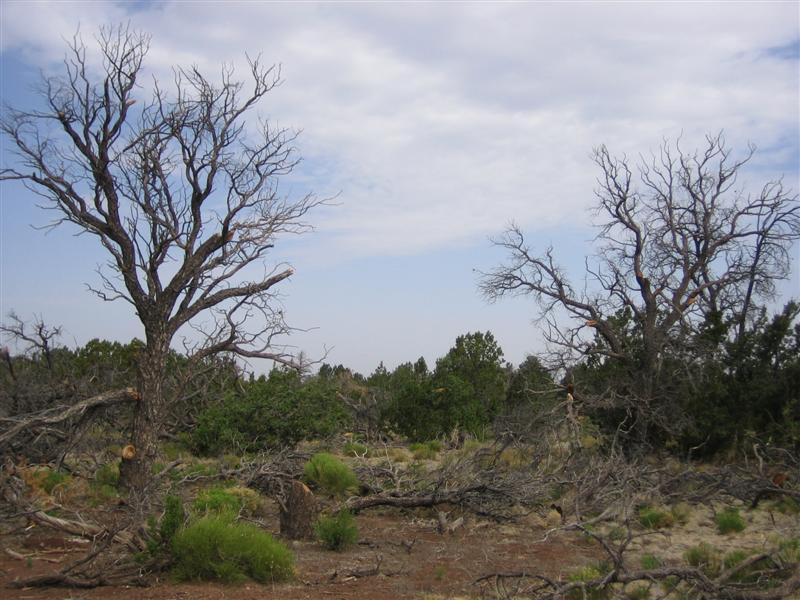
Dissertation
Summary
The aim of my dissertation
research is to understand the temperature sensitivity, mechanism, and implications of drought-induced mortality in trees, so that better predictions of vegetation and ecosystem response to global change can be made.
I am currently engaged in research quantifying the physiological
threshold of drought-induced mortality in pinyon pine (Pinus
edulis). We are using the unique environmental controls of
the Biosphere 2 Facility and an elevation gradient in northern Arizona to compare tree physiological response
and mortality under a warmer, global-change-type drought with that of
current climate conditions.
Why my
research is important
Global climate change has
enormous potential to disrupt natural systems. Many attempts at
predicting vegetation response to global change are based on
models which include simplistic assumptions. For example, some
models predict future species ranges by pairing current ranges
with current climate, predicting future climate shifts, and
assuming that communities will follow. Many have expressed a
need to improve such models by including more complex plant
responses to climatic stress. The goal of my research is to
provide results that can be used in this way.
Funding
My research is funded by a U.S.
Department of Agriculture Ecohydrology Fellowship (Grant
2005-02335: Multidisciplinary Training in Ecohydrology for
Addressing National Watershed Needs), the Biosphere 2 Earthscience Program (via the Philecology Foundation) and,
the U.S. Department of Energy NICCR Program: DOE#DE-FC02-06ER64159.
Publications
Adams HD, Guardiola-Claramonte M, Barron-Gafford GA, Villegas JC, Breshears DD, Zou CB, Troch PA, Huxman TE. 2009. Temperature sensitivity of drought-induced tree mortality portends increased regional die-off under global change-type drought. Proceedings of the National Academy of Sciences, USA In Press.
Breshears, DD, Huxman TE, Adams HD, Zou CB, Davison JE. 2008. Commentary: Vegetation synchronously leans upslope as climate warms. Proceedings of the National Academy of Sciences, USA 105:11591-11592.
McDowell
NG, Adams HD, Bailey JD, Kolb TE. 2007. The role of
stand density on growth efficiency, leaf area index, and resin
flow in southwestern ponderosa pine
forests. Canadian Journal of Forest Research 37:343-355.
McDowell
NG, Adams HD, Bailey JD, Hess M, Kolb TE. 2006. Homeostatic
maintenance of ponderosa pine gas exchange in response to stand
density changes. Ecological Applications
16:1164-1182.
Adams HD and Kolb TE. 2005. Tree growth response to drought and
temperature in a mountain landscape in northern Arizona, USA. Journal
of Biogeography 32:1629-1640.
Adams HD and Kolb TE. 2004. Drought responses of conifers in ecotone
forests of northern Arizona: tree ring growth and leaf δ
13C. Oecologia 140:217-225.